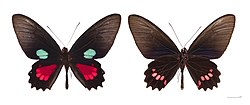
Parides burchellanus is a species of swallowtail butterfly. It is endemic to Brazil.
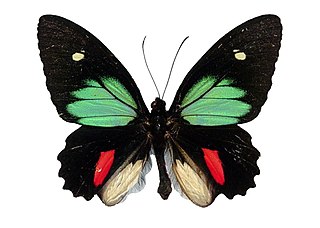
Parides childrenae, the green-celled cattleheart, is a species of butterfly in the family Papilionidae. It is found in southern North America and northern South America.
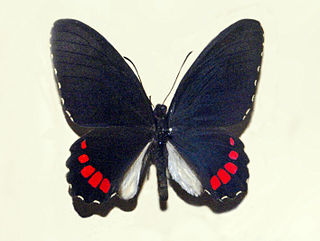
Parides erithalion, the variable cattleheart, is a North and South American butterfly in the family Papilionidae. The species was first described by Jean Baptiste Boisduval in 1836.

Papilio torquatus, the torquatus swallowtail, is a swallowtail butterfly in the subfamily Papilioninae. It is found from northern Argentina to Mexico.

Parides sesostris, the emerald-patched cattleheart or southern cattleheart, is a species of butterfly in the family Papilionidae.

Parides panares, the wedge-spotted cattleheart, is a species of butterfly in the family Papilionidae native to the Americas. The larvae feed on Aristolochia maxima and A. pilosa.
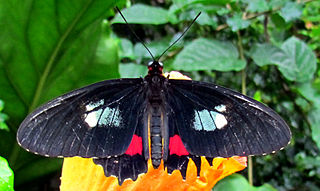
Parides iphidamas, the Iphidamas cattleheart or Transandean cattleheart, is a species of Neotropical butterfly in the family Papilionidae.
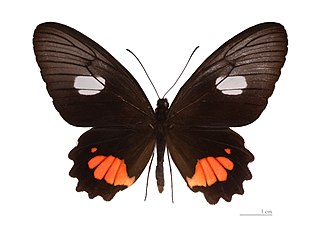
Parides anchises, the Anchises cattleheart, is a species of butterfly in the family Papilionidae native to the Americas. It is common and not threatened. The larvae feed on Aristolochia species including: A. brazilsis, A. bukuti, A. colombiana, A. cymbifera, A. fimbriata, A. inflata, A. macroura, A. odora, A. ringens, and A. triangularis.

Parides panthonus, the panthonus cattleheart, is a butterfly of the family Papilionidae. It is found in the Guianas and Suriname.

Parides phaleucas is a species of butterfly in the family Papilionidae. It was described by William Chapman Hewitson in 1869. It is found in Ecuador and Peru.

Parides proneus is a species of butterfly in the family Papilionidae. It is found in Brazil and Paraguay.

Parides chabrias is a species of butterfly in the family Papilionidae. It is found in Brazil (Amazonas), Ecuador and Peru. It is a woodland species. The female flies slowly near the ground, whilst the male has a swifter flight and generally remains at a considerable height.

Parides mithras is a species of butterfly in the family Papilionidae. It is found in Venezuela, Guyana, French Guiana and Brazil (Amazonas).

Parides echemon is a species of butterfly in the family Papilionidae. It is found in the Neotropical realm.

Parides lysander, the Lysander cattleheart, is a species of butterfly in the family Papilionidae. It is found in the Neotropical realm.

Parides neophilus, the spear-winged cattleheart, is a species of butterfly in the family Papilionidae. It is found in the Neotropical realm.

Parides orellana is a species of butterfly in the family Papilionidae. It is found in the Neotropical realm..
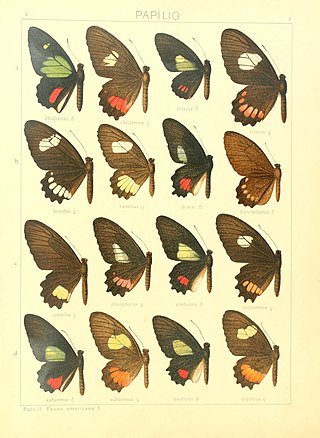
Parides cutorina is a species of butterfly in the family Papilionidae. It is found in the Neotropical realm. It is an uncommon local species which may be threatened.

Parides phosphorus is a species of butterfly in the family Papilionidae. It is found in the Neotropical realm.

Parides vertumnus is a species of butterfly in the family Papilionidae. It is found in the Neotropical realm.
